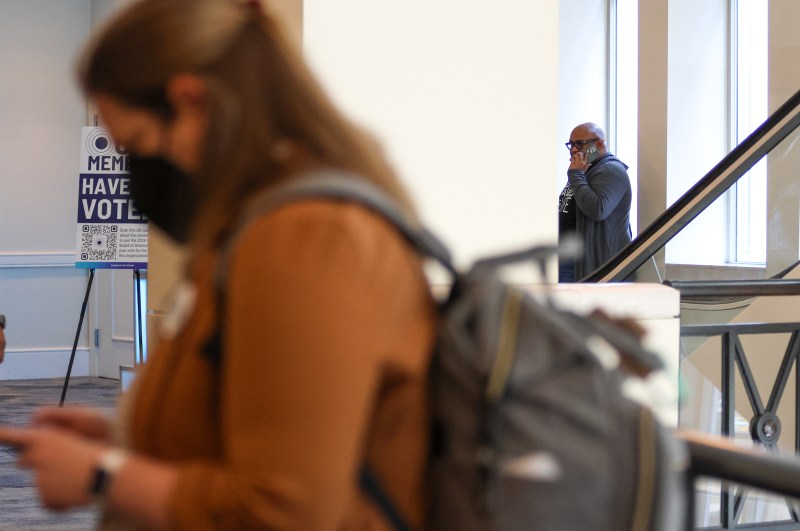In a world with platforms like TikTok, Facebook and LinkedIn at people’s fingertips, online safety has never been more of a priority.
From nasty comments on a story post to leaks of reporters’ and photographers’ private information, people both in and out of the spotlight face uncharted territory. Audiences are more hostile toward media generally and journalists specifically.
“I just think we need to be more aware and vigilant about how we’re protecting our profession,” said Tom Durkin, education program director of the James W. Foley Legacy Foundation.
At the foundation, Durkin and his coworkers provide educational materials surrounding the safety of journalists, both physically and digitally, to universities around the country. The goal is to create awareness about the importance of safety among a younger group.

Security measures on social media apps have never been standardized, but changes to X (formerly Twitter), and the addition of new applications, make safety even more challenging. In an effort to make stories more transparent, news organizations are also exposing journalists to harassment through comments and on apps.
“The guardrails have kind of been taken down a little bit and it can be more personal,” Durkin said. “It takes longer for information to be taken down, so I do think that creates more of a threat for journalists.”
In this sense, many journalists have faced abuse from internet strangers, forcing them to face risks to physical and mental safety.
“When online abuse is traumatic and sustained and a journalist isn’t supported — whether by their peers, by their newsrooms, by platforms — I think that’s when the effects are even greater,” said Aashna Agarwal, program assistant for digital safety at PEN America.
“Not only are you experiencing something that is traumatic and intended to isolate, but you’re also left with the trauma of it,” she added.
While these instances may initially seem harmless, online “trolls” can increase attacks until journalists’ personal information such as addresses, phone numbers, emails and more are released online – a pattern commonly known as doxxing.
Several panelists noted that journalists can find themselves isolated from their support networks and often feel discouraged about the stories they choose to report, potentially opting to take a less controversial story route.
Targets are more likely to be minorities and women, but journalists should be mindful that patterns like trolling and doxxing can happen to any worker and take many shapes.
“There are policies and protocols that newsrooms can have in place that make reacting to online abuse less complicated,” Agarwal said.
With instances of doxxing on the rise, some newsrooms are implementing security measures that make it harder for data brokers and hackers to log into journalists’ platforms, and some have even begun to provide mental health support in the face of digital abuse.
“There are levels of support you can offer your journalists that start with digital training, that starts with safety resources, but that also includes having a social media policy,” Agarwal said.
Within “solidarity spaces” in newsrooms, those affected by digital abuse can find a support system in light of traumatic bullying online.
Some professional organizations publish simple guidelines, but there is little consistency across newsrooms. Groups like PEN America and the James W. Foley Legacy Foundation are encouraging journalists to do what they can to protect themselves on a personal level.
“We take [the] internet for granted and we take the things that we’re downloading for granted without thinking about who has access to it,” Durkin said. “Nothing online is 100 percent safe.”






You must be logged in to post a comment.